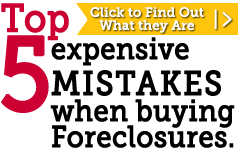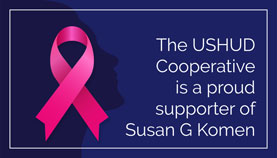What is an Energy Efficient Mortgage?
An Energy Efficient Mortgage (EEM) is a mortgage that credits a home’s energy efficiency in the mortgage itself. EEMs give borrowers the opportunity to finance cost-effective, energy-saving measures as part of a single mortgage and stretch debt-to-income qualifying ratios on loans thereby allowing borrowers to qualify for a larger loan amount and a better, more energy-efficient home.
To get an EEM a borrower typically has to have a home energy rater conduct a home energy rating before financing is approved. This rating verifies for the lender that the home is energy-efficient.
EEMs are typically used to purchase a new home that is already energy efficient such as an ENERGY STAR qualified home. The term EEM is commonly used to refer to all types of energy mortgages including Energy Improvement Mortgages (EIMs), which are used to purchase existing homes that will have energy efficiency improvements made to them. EIMs allow borrowers to include the cost of energy-efficiency improvements to an existing home in the mortgage without increasing the down payment. EIMs allow the borrower to use the money saved in utility bills to finance energy improvements. Both EEMs and EIMs typically require a home energy rating to provide the lender with the estimated monthly energy savings and the value of the energy efficiency measures — known as the Energy Savings Value.
EEMs (and EIMs) are sponsored by federally insured mortgage programs (FHA and VA) and the conventional secondary mortgage market (Fannie Mae and Freddie Mac). Lenders can offer conventional EEMs, FHA EEMs, or VA EEMs.
Conventional Energy Efficient Mortgages
Conventional EEMs can be offered by lenders who sell their loans to Fannie Mae and Freddie Mac. Conventional EEMs increase the purchasing power of buying an energy efficient home by allowing the lender to increase the borrower’s income by a dollar amount equal to the estimated energy savings. The Fannie Mae loan also adjusts the value of the home to reflect the value of the energy efficiency measures. For more information about Fannie Mae's EEM you can call 1-800-7FANNIE (732-6643). Visit Fannie Mae's web site to find a Fannie Mae-approved lender in your state. A PowerPoint presentation ![]() is available with more information about Freddie Mac's EEM .
is available with more information about Freddie Mac's EEM .
FHA Energy Efficient Mortgages
FHA EEMs allow lenders to add 100 percent of the additional cost of cost-effective energy efficiency improvements to an already approved mortgage loan (as long as the additional costs do not exceed $4000 or 5 percent of the value of the home, up to a maximum of $8000, whichever is greater). No additional down payment is required, and the FHA loan limits won’t interfere with the process of obtaining the EEM. FHA EEMs are available for site-built as well as for manufactured homes. Applications for an FHA EEM may be submitted to the local HUD Field Office through an FHA-approved lending institution. HUD has a searchable list of approved lenders. Information about the FHA EEM can be found on FHA’s web site. Additional information is available from HUD’s Office of Single Family Housing by calling (800) 569-4287. There is also a fact sheet about FHA's EEM ![]() (70KB). The Manufactured Housing Research Alliance Web site has information about FHA EEMs for ENERGY STAR qualified manufactured homes.
(70KB). The Manufactured Housing Research Alliance Web site has information about FHA EEMs for ENERGY STAR qualified manufactured homes.
VA Energy Efficient Mortgages
The Veteran’s Administration (VA) EEM is available to qualified military personnel, reservists and veterans for energy improvements when purchasing an existing home. The VA EEM caps energy improvements at $3,000–$6,000. Borrowers should ask their lender about a VA EEM at the beginning of the lending process. More information about VA EEMs can be obtained from the Web site for the U.S. Department of Veteran’s Affairs or by calling (800) 827-1000. Chapter 7 of VA Pamphlet 26-7 (Revised) ![]() (1.5MB) contains lender guidance on the VA EEM.
(1.5MB) contains lender guidance on the VA EEM.
To learn more about EEMs contact Fannie Mae, Freddie Mac, the FHA or the VA. Additional information about writing energy-efficient mortgages can be found on the Web sites for the U.S. Department of Housing and Urban Development (HUD) and the Residential Energy Services Network (RESNET).
ENERGY STAR Mortgages
An ENERGY STAR mortgage pilot program is underway to demonstrate that financing can be a useful tool for enhancing the success of investing in energy-efficient homes by lowering borrowing costs, as well as demonstrating the importance of utilizing a network of qualified energy auditors and contractors to ensure that cost-effective energy efficiency improvements are realized.
By incorporating the costs of energy efficiency improvements into the loan itself, an ENERGY STAR mortgage allows borrowers to pay for those investments over the life of their loan and deduct the interest from their federal and state income taxes. One of the key benefits of an ENERGY STAR mortgage is that a borrower can finance and make energy-saving improvements to their homes without paying more for financing than they would for a typical mortgage. Participating lenders also offer borrowers an additional financial benefit above and beyond the value of the home energy savings, such as discounted mortgage rates, reduced loan fees, or assistance with closing costs.







